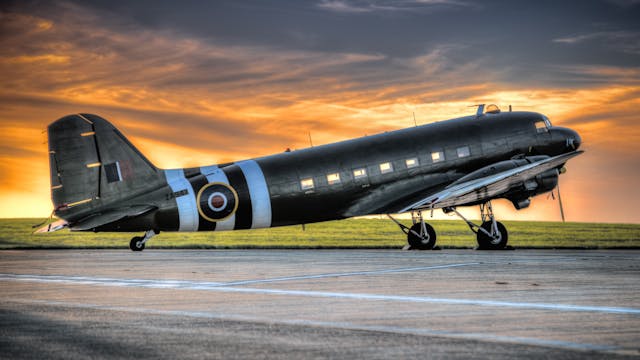When passengers settle into their seats and prepare for takeoff, they’re about to experience one of humanity’s greatest technological achievements. Modern aircraft aren’t just flying machines, they’re sophisticated orchestrations of thousands of systems working together seamlessly. Each flight represents a complex dance of engineering excellence that most travelers never see or think about. From the cockpit computers to the climate controls, decades of innovation have transformed aviation into something truly remarkable. What makes today’s aircraft so impressive isn’t any single breakthrough, but rather how countless technologies integrate to create an experience that feels effortless, even though nothing about it actually is.
The Flight Control Systems
Think of flight controls as the nervous system of an aircraft, they translate every pilot command into precise movements that keep the plane exactly where it needs to be. Today’s commercial jets have largely moved beyond mechanical cables and pulleys, embracing fly, by-wire systems where electronic signals do the heavy lifting. These sophisticated setups don’t just relay commands; they’re constantly analyzing flight conditions and can actually prevent pilots from accidentally pushing the aircraft beyond its safe limits. Wings and tail surfaces respond through ailerons that control roll, elevators that adjust pitch, and rudders that manage yaw.
Propulsion and Engine Technology
Aircraft engines are absolute marvels when you stop to think about what they accomplish. Modern turbofans pull in massive amounts of air through those huge fan blades you see at the front, only some of it actually burns with fuel in the engine core, while the rest bypasses around to create extra thrust. Inside those engines, temperatures soar past 2, 000 degrees Fahrenheit, which means components need exotic materials and clever cooling systems just to survive. The Full Authority Digital Engine Control system acts like the engine’s brain, constantly tweaking fuel flow and air intake to squeeze out optimal performance while keeping everything safely within operational limits.
Avionics and Navigation Systems
Step into a modern cockpit and you’ll feel like you’ve entered a high, tech command center, because that’s essentially what it is. Those large glass displays have replaced the old-school analog dials and gauges, showing pilots everything they need to know through customizable screens that pull data from sensors scattered throughout the aircraft. Navigation has come a long way too. GPS works together with traditional radio beacons and inertial systems to pinpoint the aircraft’s location anywhere on the planet, even over empty oceans where there’s nothing but water for thousands of miles.
Hydraulic and Pneumatic Systems
Underneath the passenger cabin and tucked inside the wings, powerful hydraulic systems do the hard physical work of moving control surfaces, extending landing gear, and applying brakes. We’re talking about pressures around 3, 000 pounds per square inch flowing through miles of tubing, enough force to move massive components with surgical precision. Aircraft designers never rely on just one hydraulic system, though. Multiple independent systems mean that even if one fails, critical controls keep working without interruption.
Electrical Power and Distribution
Modern aircraft are hungry for electricity, powering everything from navigation computers to in-flight entertainment systems. Generators attached to each engine churn out alternating current that flows through redundant distribution networks, designed to isolate problems and keep essential systems running no matter what happens. Batteries provide backup power for critical functions and let ground crews operate systems without firing up the engines. Behind the scenes, power management systems constantly monitor electrical demand and automatically reroute power when needed to keep vital equipment online. There’s also a fascinating trend toward “more electric aircraft, ” where designers are gradually replacing traditional hydraulic and pneumatic systems with electrical alternatives. These newer approaches offer better efficiency, lighter weight, and simpler maintenance, all things that make a real difference in aviation’s ongoing quest for improvement.
Cabin Systems and Passenger Comfort
While flight-critical systems get most of the glory, passenger comfort relies on equally impressive technology working quietly in the background. Pressurization systems maintain cabin conditions equivalent to about 6, 000 to 8, 000 feet elevation, even when the aircraft is cruising seven miles above the ground. Air filtration is surprisingly sophisticated too, specialized filters cycle cabin air continuously, capturing bacteria and viruses to maintain air quality that rivals hospital operating rooms. LED lighting has transformed the passenger experience, allowing cabin crews to adjust both brightness and color temperature to help reduce fatigue on those marathon international flights. Even basic amenities require creative engineering to function properly at altitude. Water systems and waste management need specialized components that work reliably under reduced atmospheric pressure. Galley equipment enables crews to safely prepare hot meals while airborne, and modern entertainment systems deliver personalized content either through seat-back screens or streaming directly to passengers’ own devices. Maintaining sanitary conditions throughout the flight involves careful attention to detail, including the use of specialized aircraft lavatory fluid formulated to work effectively in the unique low-pressure environment of aircraft lavatories.
Conclusion
Every aircraft flight showcases an extraordinary blend of engineering disciplines, each one contributing something essential to the overall success of modern air travel. The powerful engines pushing planes across oceans, the sophisticated electronics guiding them through busy airspace, the hydraulic systems moving control surfaces with precision, they all represent countless hours of development and testing. When you really understand what’s happening behind the scenes, you start to appreciate just how remarkable each flight truly is. Thousands of components working in concert with millions of lines of code, all coordinating to move passengers safely and efficiently from one place to another.









